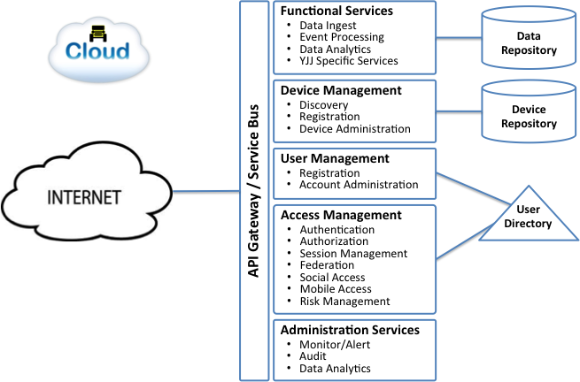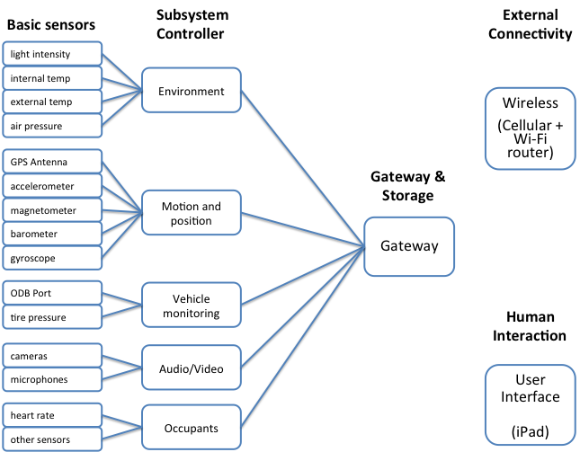#YJJ Architecture: Vehicle Telematics
Author: Mark Dixon
Monday, April 28, 2014
2:26 pm
Having explored very high level architectures for both the vehicle and cloud I will begin to review on this blog some currently available (or soon to be available) products that may fit somewhat into the structure I have outlined.  I don’t expect an exact fit, but this will help me to narrow my choices about what technologies I should test first.

The first is a forthcoming product from Kynetx named Fuse  Kynetx claims that “Fuse combines a sensor, a mobile app and the Cloud to create a new experience around owning and using a car.†The system includes three basic parts:
- A device that plugs into the OBD II port on your car, has a GPS and cellular connection, and constantly stream data from your car.
- A mobile app for interacting with the data.
- A personal cloud platform, under the car owner’s control, where the data is stored and processed.
Phil Windley, founder and CEO of Kynetx and well-known author and innovator, posted an interesting article on his blog yesterday: “Fuse is a Telemetrics Platform for Your Car: Trips on Your Calendar.”
I particularly like three things about the Fuse approach:
- The ODB II monitoring device has both cellular and GPS connections, allowing it to monitor the vehicle while the driver is not in it.  Other devices I have seen require the driver’s smartphone to provide connectivity beyond the vehicle.
- The Personal Cloud Platform from Kynetx is an innovative approach to providing a repository and programmable functionality in a highly personalized, privacy-protected manner. Â While this approach is quite different than the enterprise-centric architecture proposed by Oracle, it may be better suited for my Yellow Jeep Journey objectives.
- Fuse will have a published event-driven API to access and manipulate functionality.
I don’t know if it will allow other inputs from the vehicle that are not available through the ODB II port interface.  Sensors like GPS, accelerometers, magnetometers, etc., may require a separate interface.
I pre-ordered a couple of the Fuse devices during its Kickstarter campaign a couple of months ago. Â I anxiously await delivery, which should be in about 2 months.













